There are more than 8,700 wineries in the United States and around 250 recognized wine regions, or American Viticultural Areas (AVAs). Some are known around the world (hello, Napa) while others remain obscure to all but a small group of locals and wine experts. To get to know each one of them, anyone interested in wine should consider taking a wine trip across the United States.


The Ultimate American Wine Road Trip, Mapped
While it would take half a lifetime to properly see all of the country’s wine regions, a select number stand out as exemplary of American wine’s past, present, and future. These regions span from coast to coast and reach just as close to the country’s northern border as they do to the southern border. Today, with international travel close to non-existent, Americans who travel with wine on the mind are looking inward. The most enlightening way to experience the diversity of wine is the great American road trip.
The 15-region route below takes you from the wineries of Oregon, down the California coast, over to Texas and Virginia, up to New York and Michigan, and then back to the Pacific Northwest. The plot points are in cities central to each region, and it’s a loop, so your wine trip can start from anywhere and move forward or back how you like.
1. Willamette Valley: Corvallis, Oregon
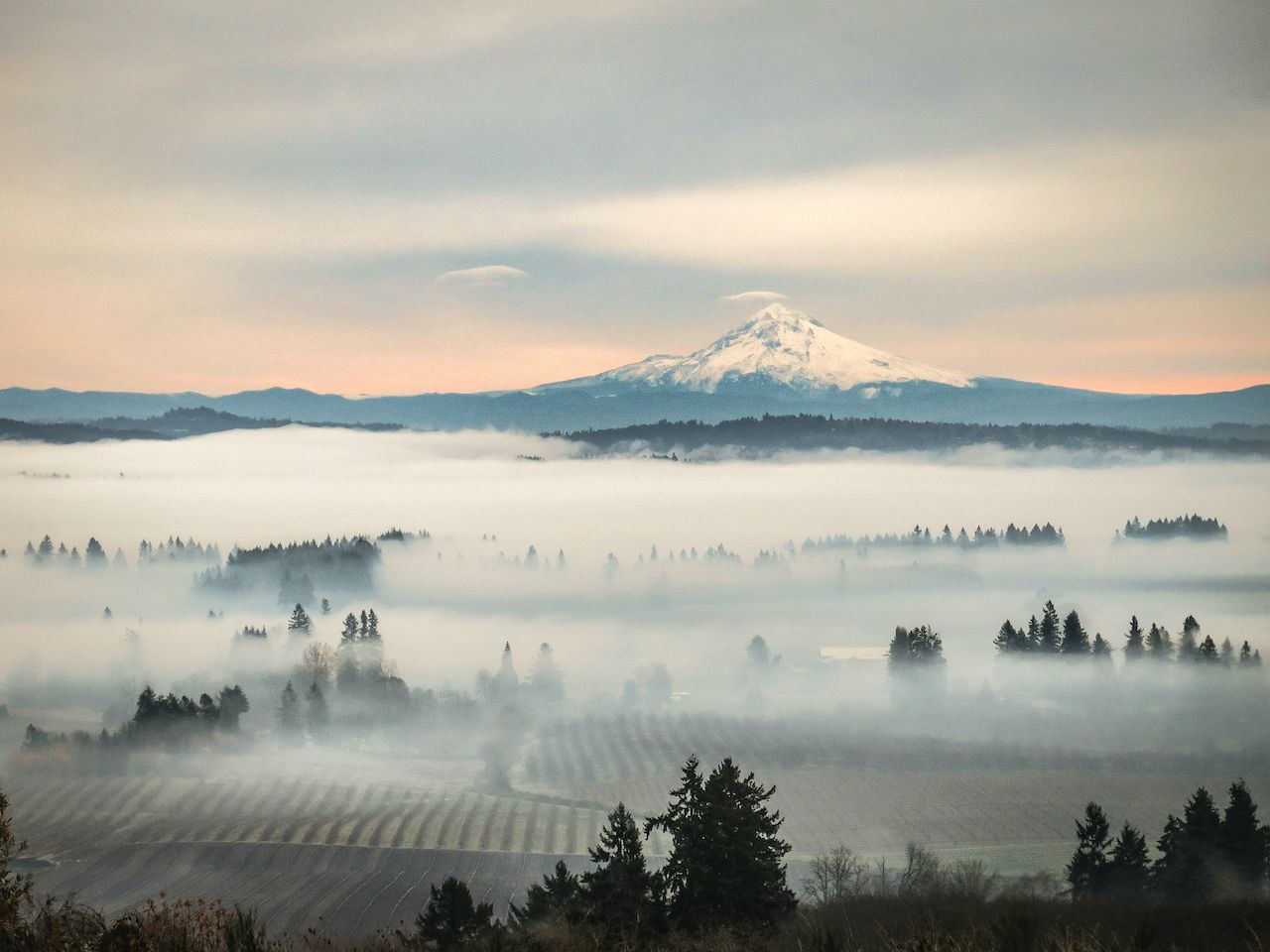
Photo: Leslie Brienza/Shutterstock
The Willamette Valley AVA was established in 1983, and it spans from the Columbia River at the northern border down past Eugene. Corvallis, in between Portland and Eugene, is a good home base to familiarize yourself with the Pacific Northwest’s home of pinot noir. Other notable grape varieties include chardonnay and riesling. There are more than 600 wineries in the Willamette Valley and six smaller AVAs inside its boundaries, so there’s plenty to explore.
Wineries to try: Lumos Wine Company, Abby Creek Vineyard, LaVelle Vineyards
2. Napa, California

Photo: cheng cheng/Shutterstock
You probably know Napa. Northern California wine country put American wine on the global map, and today, it remains a major destination for both wine enthusiasts and the wine curious. Wines made with cabernet sauvignon and chardonnay are the varieties to try. Long-running Napa wineries that first gained recognition are well worth the visit, as are classic and sustainability-minded wineries like Cakebread Cellars.
If you find Napa too glitzy and the prices too high, nearby Sonoma is a nice escape with equally delicious wine, plus it’s one of the most all-around sustainable regions in the country.
Wineries to try: Cakebread Cellars, Chateau Montelena, J. Moss Winery
3. Paso Robles, California
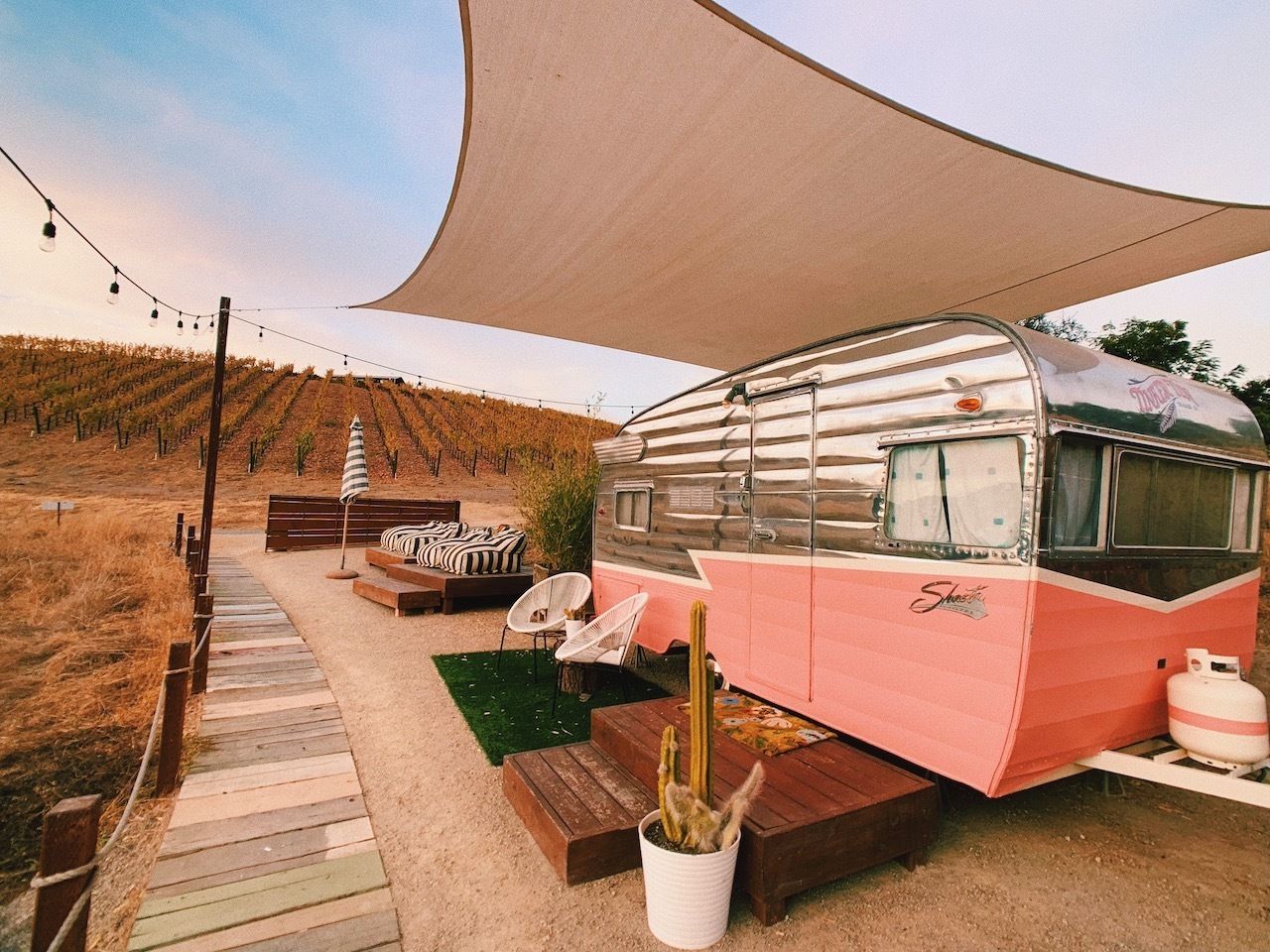
Photo: Laura Reilly
There’s a little something for everyone in the vast, sprawling Paso Robles AVA. There are 11 subregions, each with different weather, soil, and styles. Some 200 wineries work with around 40,000 acres of vineyards growing 46 varieties. Cabernet sauvignon, merlot, syrah, grenache, and mourvedre are popular red varieties. When you want a break from wine, Paso Robles also has a number of distilleries making whiskey, brandy, gin, and grappa with local grapes, wheat, and botanicals.
Wineries to try: DAOU, ONX, and Halter Ranch
4. Santa Barbara, California
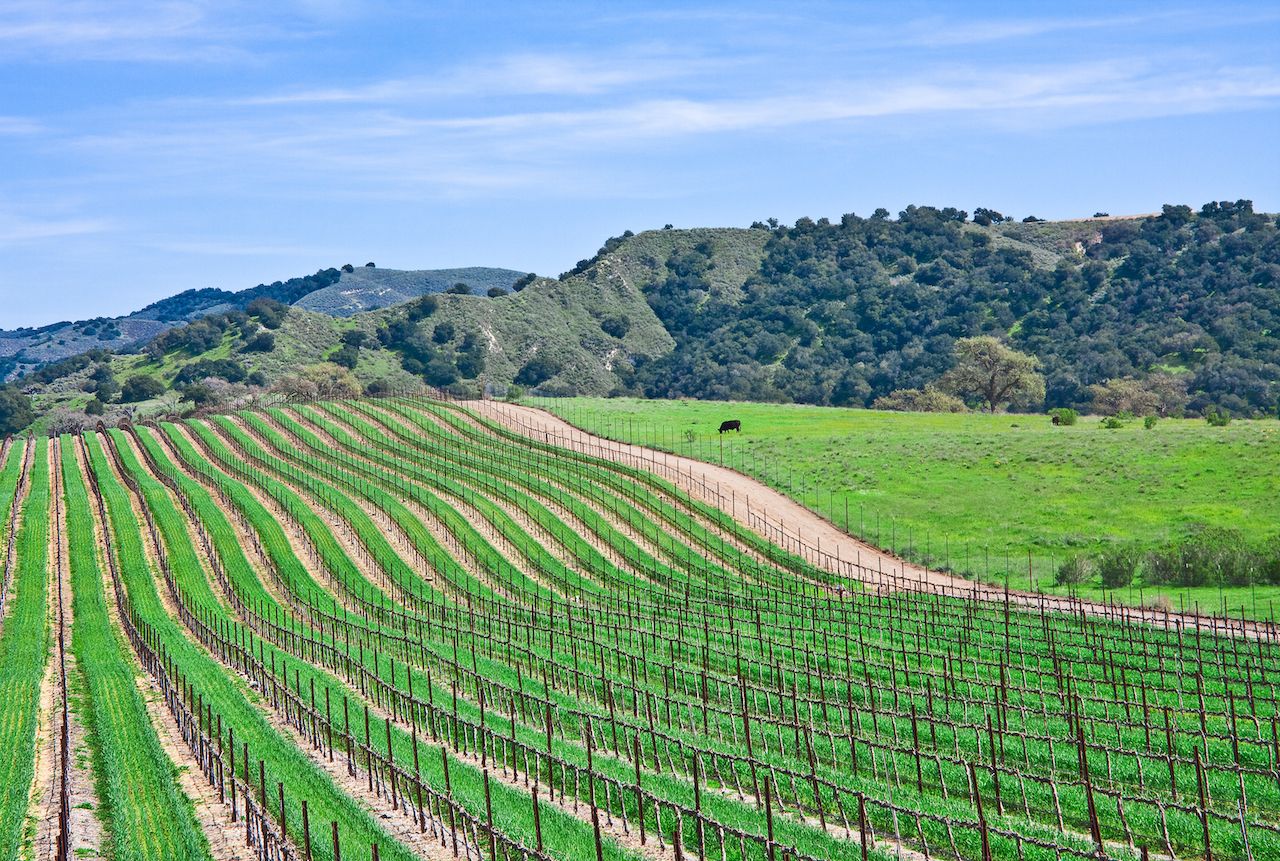
Photo: David M. Schrader/Shutterstock
Continue just a little farther down the Central Coast of California on your wine trip to hit Santa Barbara. There’s one immediate thing you’ll notice as soon as you arrive: The weather seems almost too perfect. That’s true whether you’re on the coast or a little farther inland in the Santa Ynez Valley. You might just think the same thing about the wines. There are six AVAs within the larger Santa Barbara County AVA, and the region largely focuses on chardonnay, pinot noir, and syrah — though don’t be surprised to find Italian varieties and styles as well. For some of the best pinot noir in the country, head about an hour north to Lompoc to try wines from the Sta. Rita Hills AVA in the collection of small winery tasting rooms known as the Wine Ghetto.
Wineries to try: Sandhi, Palmina, Rideau Vineyard
5. Sedona, Arizona

Photo: FiledIMAGE/Shutterstock
Arizona is more famous for its cacti than its vines, but a small number of vineyards that make up the Verde Valley AVA make Sedona a more-than-worthy stop on a wine road trip. The first vineyards were planted by missionaries in the late 1600s, and today many of the notable wineries are clustered close to Sedona, which is itself a gorgeous, artist-friendly destination to spend a few days in.
Wineries to try: Burning Tree Cellars, Flying Leap Vineyards, Javelina Leap
6. Fredericksburg, Texas
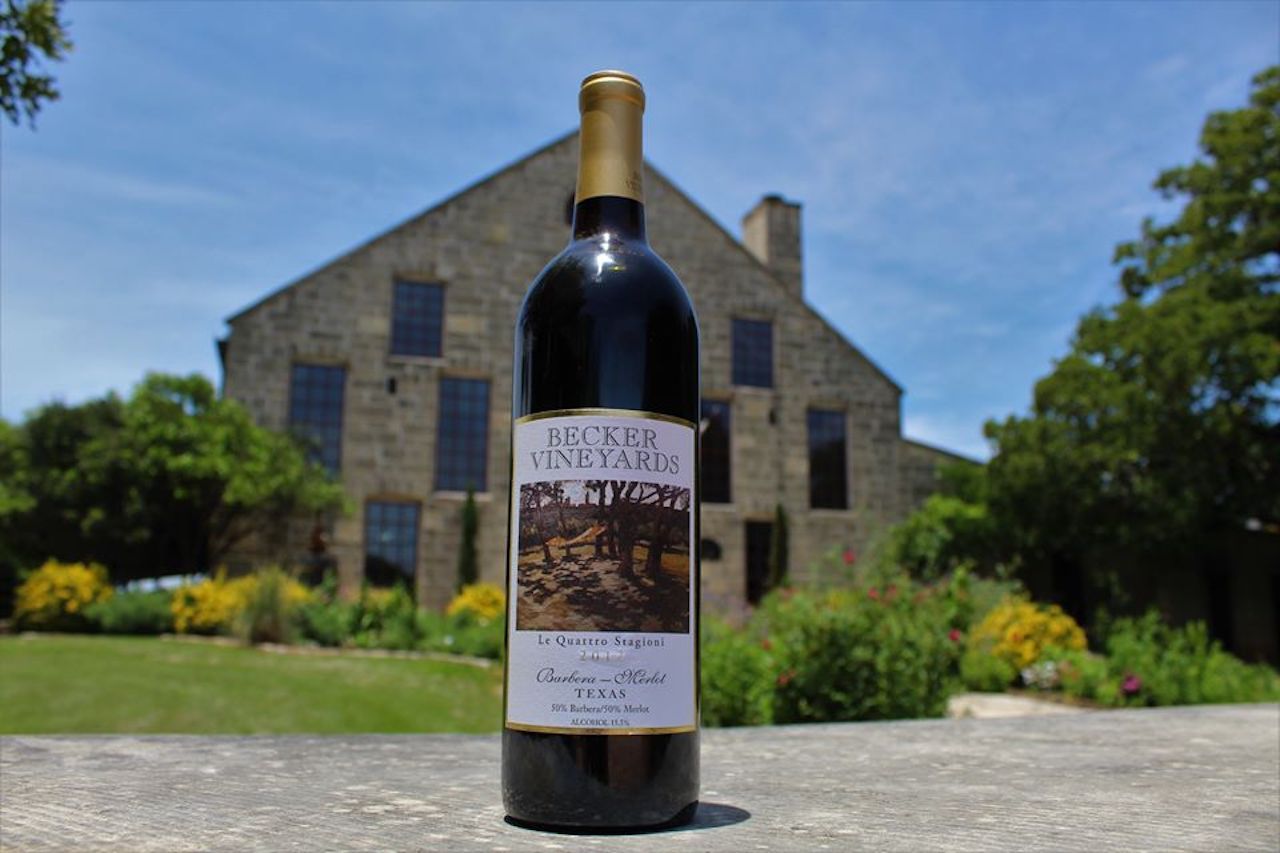
Photo: Becker Vineyards/Facebook
While the wine scene in Texas doesn’t quite match up to the “everything is bigger in Texas” quip, it does come close. Texas Hill Country has more than 50 wineries, and the AVA is one of the largest at nine million acres growing varieties like cabernet sauvignon, zinfandel, tempranillo, syrah, and muscat canelli. Fredericksburg, not far from Austin, is where you’ll find some of the oldest wineries. Head down Highway 290, popularly known as Wine Road 290, for a string of wineries producing quality bottles.
Wineries to try: Becker Vineyards, Hilmy Cellars
7. Augusta, Missouri
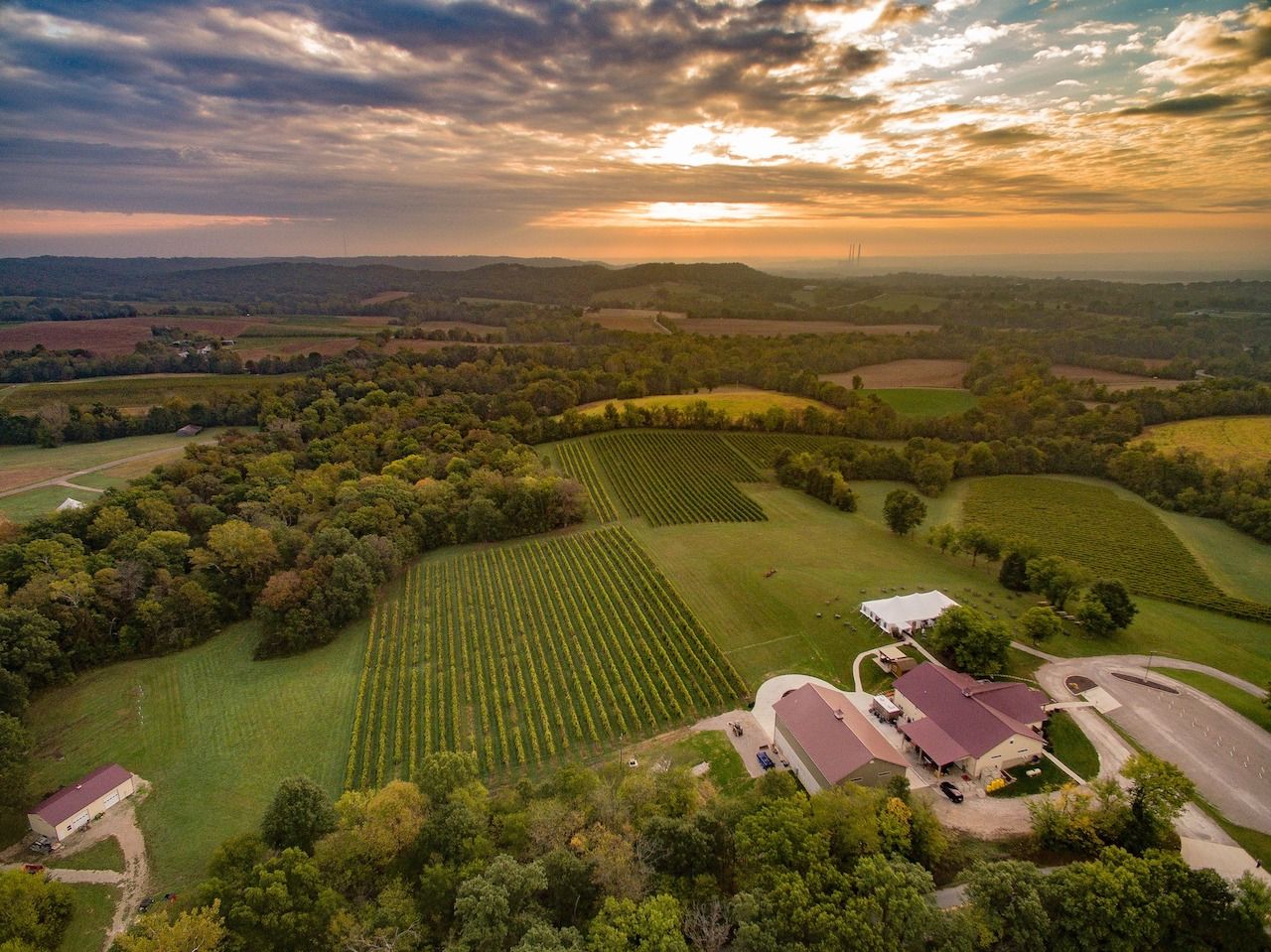
Photo: Noboleis Vineyards/Facebook
Fun fact: Augusta, Missouri, became the site of the first AVA in the United States when it was designated in 1980. The state has a long history with wine that dates back to before Prohibition, but that history hasn’t quite carried on to the present day. Make Augusta a stop for the history, though, and you’ll more than likely find some wine you love as well. It’s a manageable size for a quick stop — just 15 miles centered around the town of Augusta.
Wineries to visit: Montelle Winery, Augusta Winery, Noboleis Vineyards
8. Cincinnati, Ohio
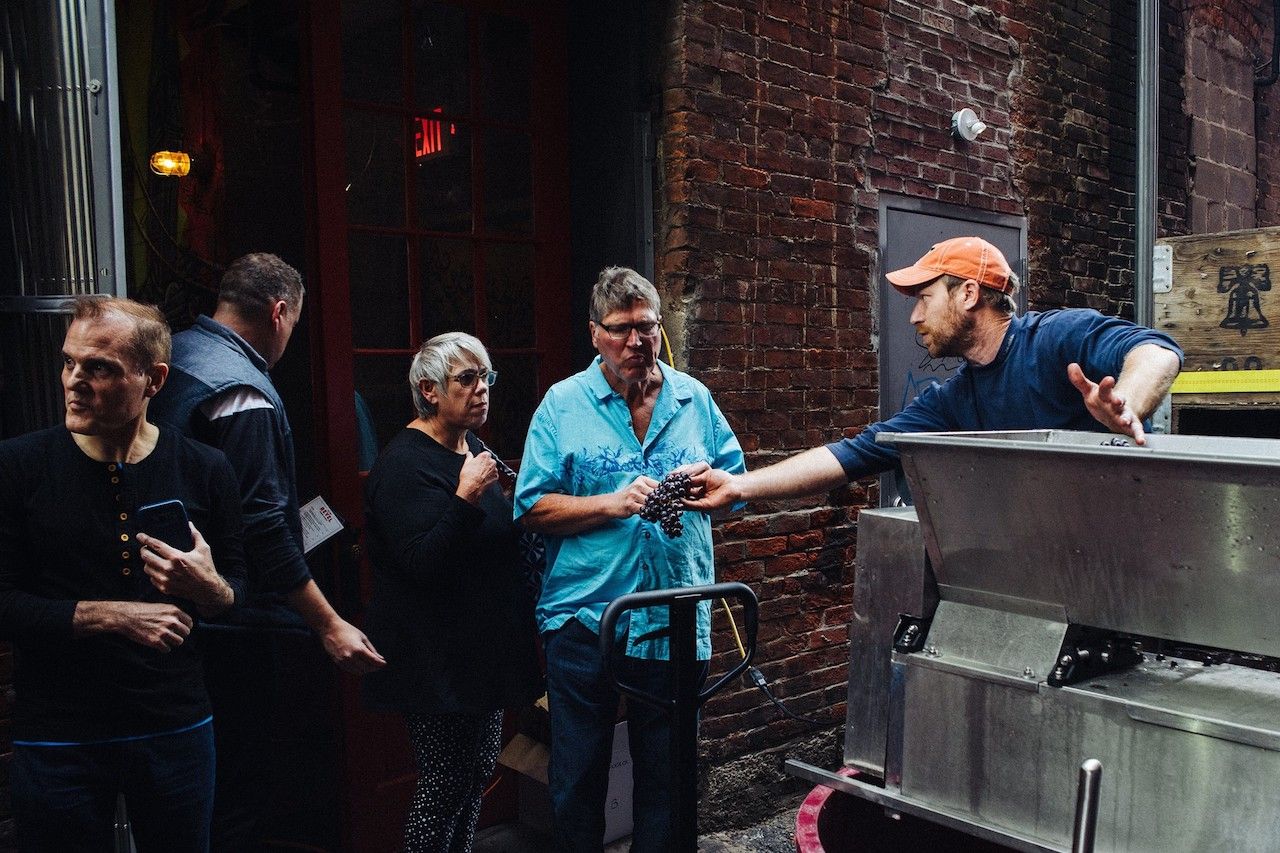
Photo: Revel OTR Urban Winery/Facebook
The Ohio River Valley Wine Trail stretches across multiple bordering states, and Cincinnati is the best place to focus on for your wine road trip. The region’s wine history starts in the early 1800s, but it went quiet during and after the Civil War until the 1970s, when hybrid grape varieties were planted with research help from Ohio State University. It sparked a Midwest wine surge that’s fun to explore today. Be sure to taste the region’s ice wines.
Wineries to visit: Revel OTR, Harmony Hill Vineyard
9. Charlottesville, Virginia
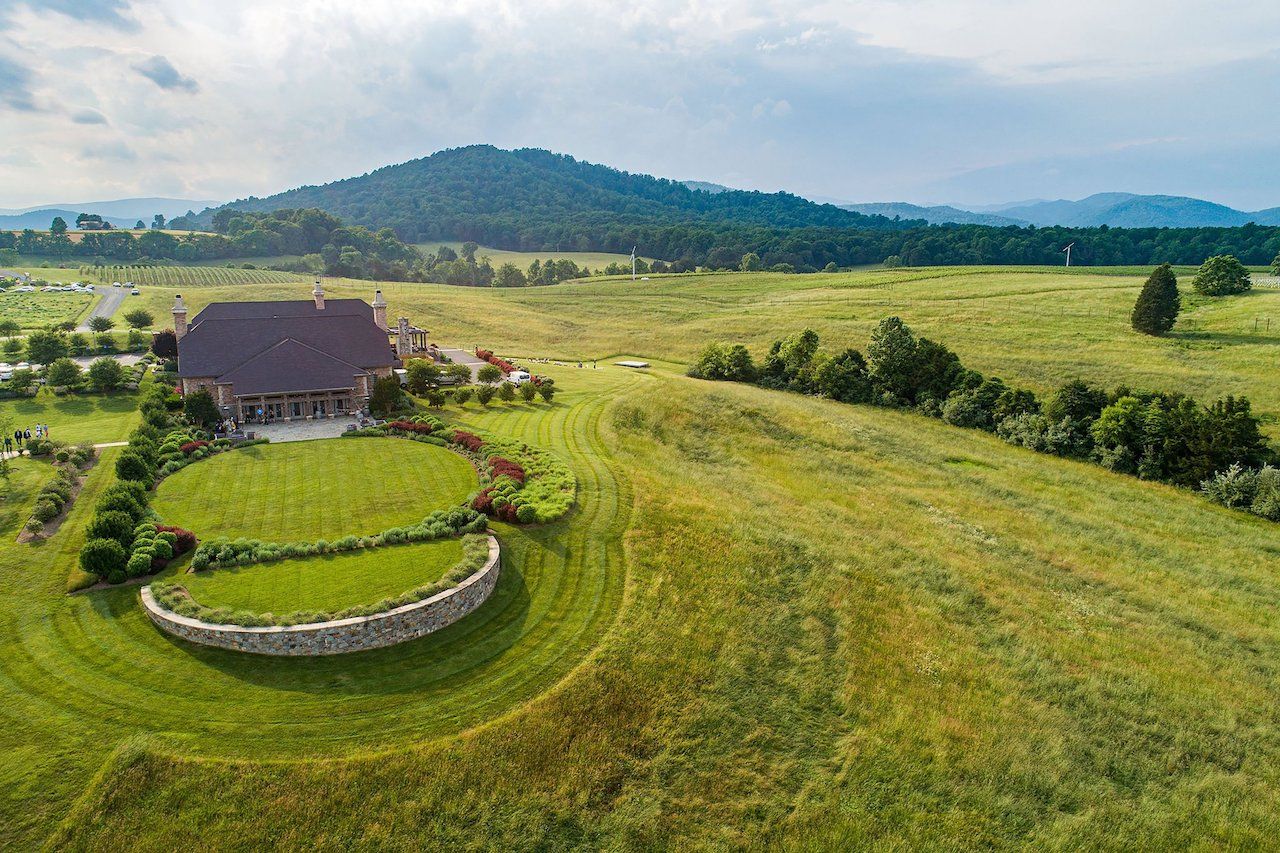
Photo: Early Mountain Vineyards/Facebook
While Missouri might hold the title for the first AVA, some of the very first wine grapes were grown in Virginia by Founding Fathers like Thomas Jefferson. The wineries around Charlottesville can be tricky for growers to navigate thanks to humidity and other weather factors, but producers have found plenty of solutions over the centuries. Today, thanks to the general affordability of bottles and the openness that producers have for experimentation, Virginia wine country is one to seek out. Stay in Charlottesville for a somewhat central location with easy access to Virginia’s seven AVAs
Wineries to visit: Blenheim Vineyards, Slater Run Vineyards, Early Mountain Vineyards
10. The Hamptons, New York

Photo: Joao Paulo V Tinoco/Shutterstock
The Hamptons carry a lot of associations, and not all of them might feel welcoming for the casual wine lover. This is, after all, a place where rosé is called Hampton water (and there’s even a brand with the same name). But wineries in the Hamptons and nearby on the North Fork of Long Island are producing wine that will make you forget all about the Hamptons reputation for exclusivity. Thanks in part to its small footprint and proximity to New York City, expect Long Island wines to generally be on the pricier side.
Wineries to visit: Paumanok Vineyards, Wolffer Estate, Channing Daughters
11. Hammondsport, New York
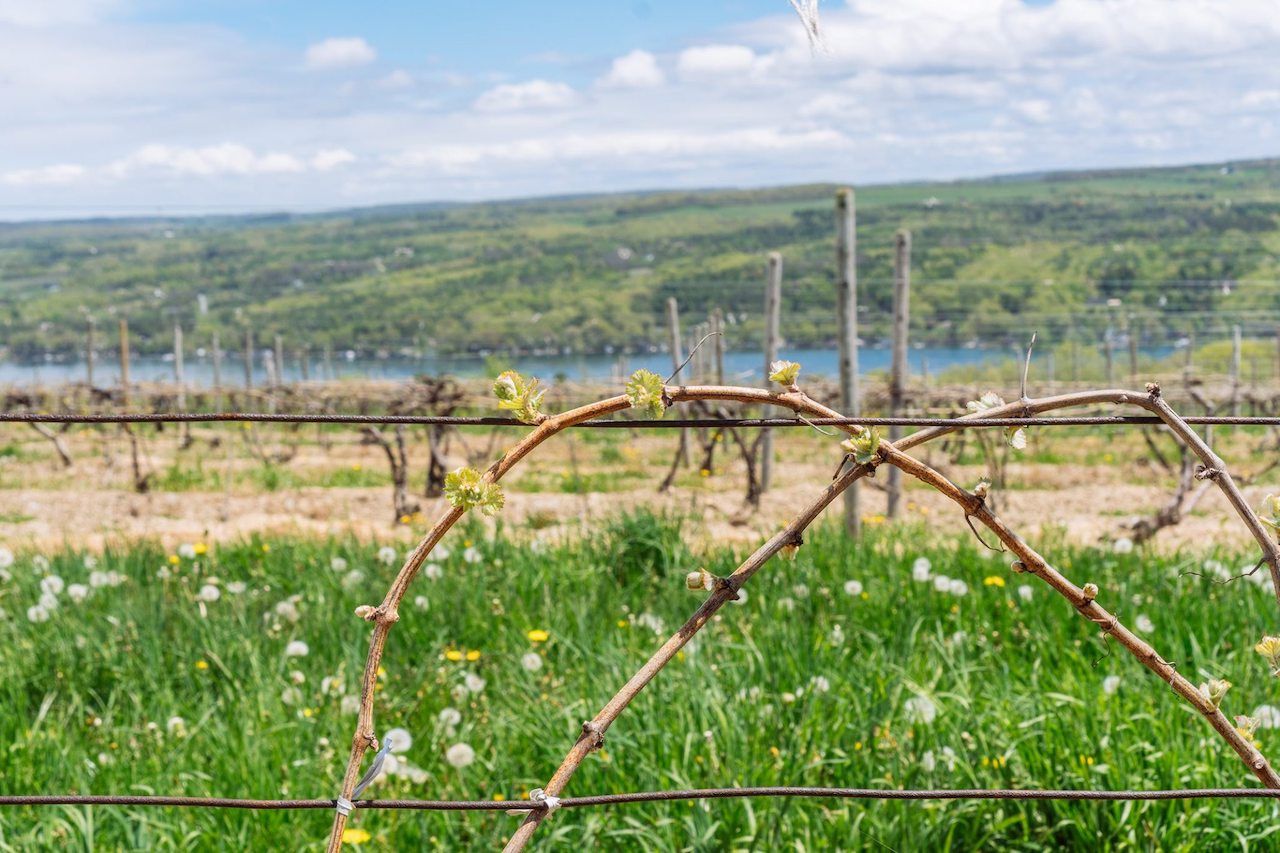
Photo: Dr. Konstantin Frank Winery/Facebook
New York’s other famous wine region is upstate in the Finger Lakes. Here, winemakers have long been experimenting with cold-weather varieties, as well as ways to combat the effects of climate change. You’ll find every style of riesling in the Finger Lakes and try enough gewurztraminers to finally nail how to correctly say the German variety. Cabernet franc and merlot are common red varieties. The Finger Lakes have grown wine since the 1970s, but it’s only been the past decade or so that the region has racked up the awards and designations as the top US wine region to visit.
Wineries to try: Dr. Konstantin Frank, Fox Run Vineyards, Hermann J. Wiemer
12. Traverse City, Michigan
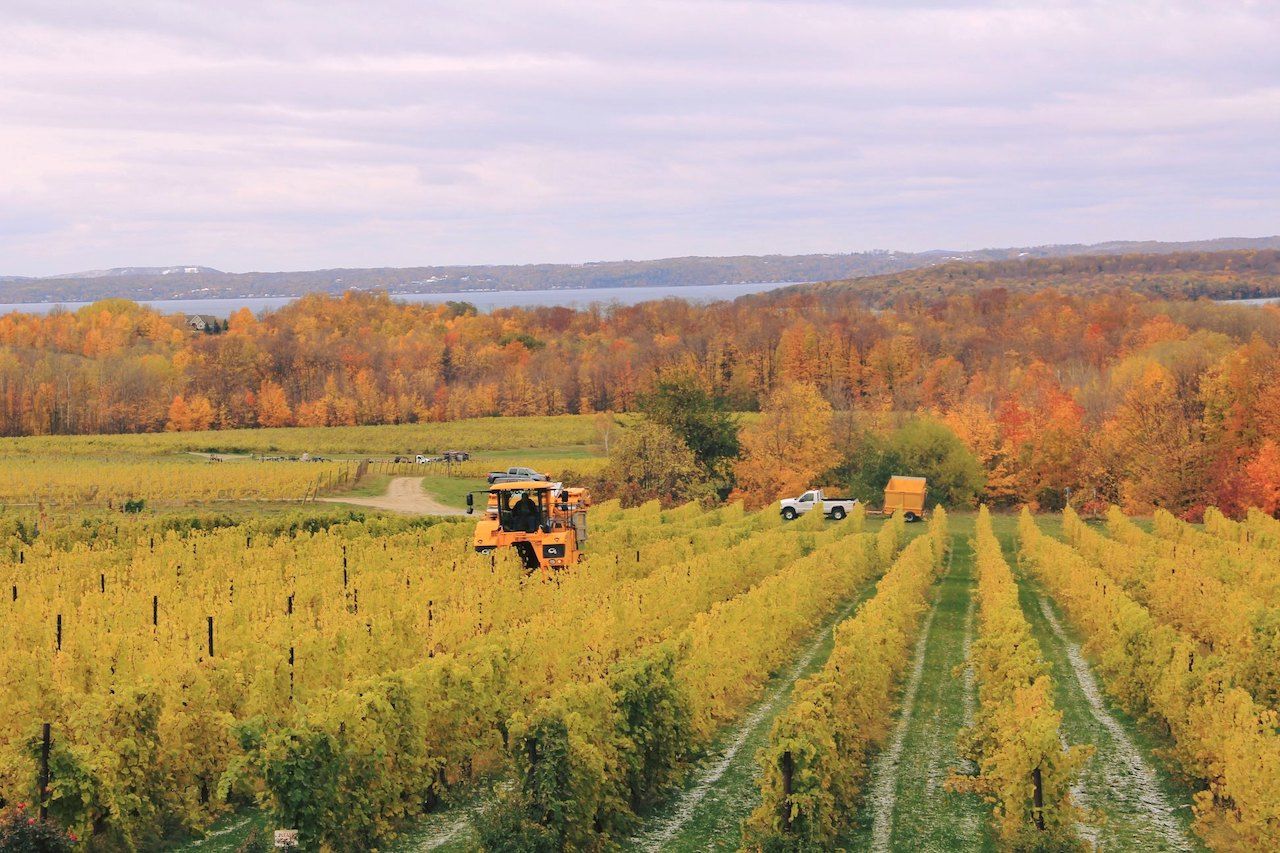
Photo: Chateau Grand Traverse/Facebook
The area of northern Michigan that borders Lake Michigan gets cold, but not too cold for grapes. There are around 40 wineries near Traverse City, primarily on the Leelanau peninsula. In terms of location, it’s on the same 45th Parallel as European regions like Bordeaux and Piedmont are on the other side of the world. Grape varieties like cabernet franc and merlot are common. Wine tasting here is a casual affair, and it’s easy to lose track of time tasting, talking, and learning from the people who call the wine region home.
Wineries to try: Mari Vineyards, Chateau Grand Traverse, Bonobo Winery
13. Palisade, Colorado
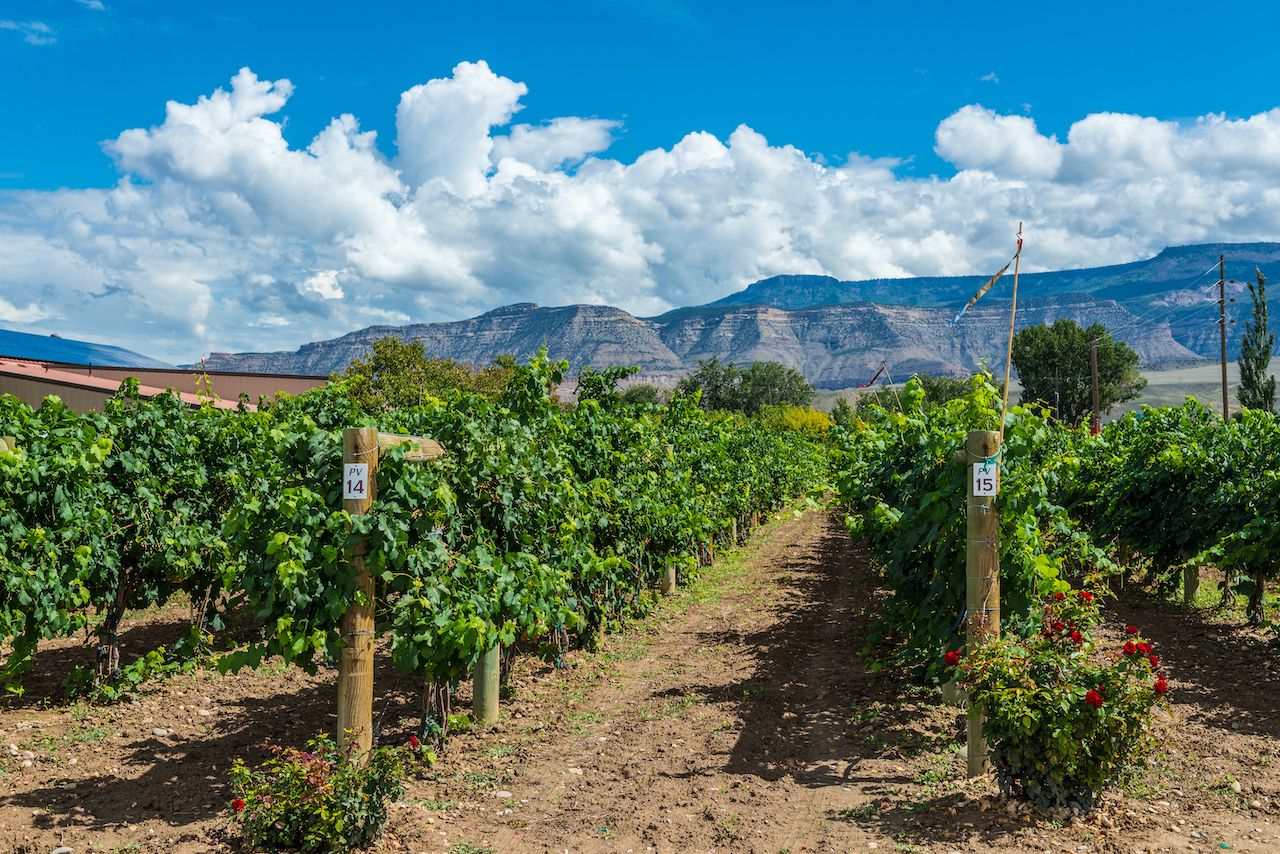
Photo: Phillip Rubino/Shutterstock
The Palisade region west of Denver is famous for its peaches and other fruit, and wine grapes take to the land just as well. The region is small but gorgeous, with a focus on grapes like chardonnay, merlot, cabernet sauvignon, and sauvignon blanc. For the full experience, bike the Fruit and Wine Byway for a mix of the outdoors, mountain views, and more than two dozen wineries to visit.
Wineries to try: Maison La Belle Vie, Colterris, Restoration Vineyards
14. Boise, Idaho

Photo: Knmata/Shutterstock
The Pacific Northwest gets most of the attention when it comes to northern wine regions, but just east you’ll find a small, but thriving, wine scene around Boise. Idaho’s farms are more known for potatoes than grapes, but producers here are slowly building the next great American wine region to keep on your radar. Drive to the wineries in the Snake River Valley if you’re looking for on-site tastings at the vineyard, then head to the neighboring Garden City for one of the best urban winery districts in the US. You’re going to fall in love with the wine here, so make sure to pick up a couple extra bottles to take home because most Idaho wineries don’t distribute far from their local market.
Wineries to try: Telaya Wine Co., Fujishin, Cinder, Split Rail
15. Walla Walla, Washington
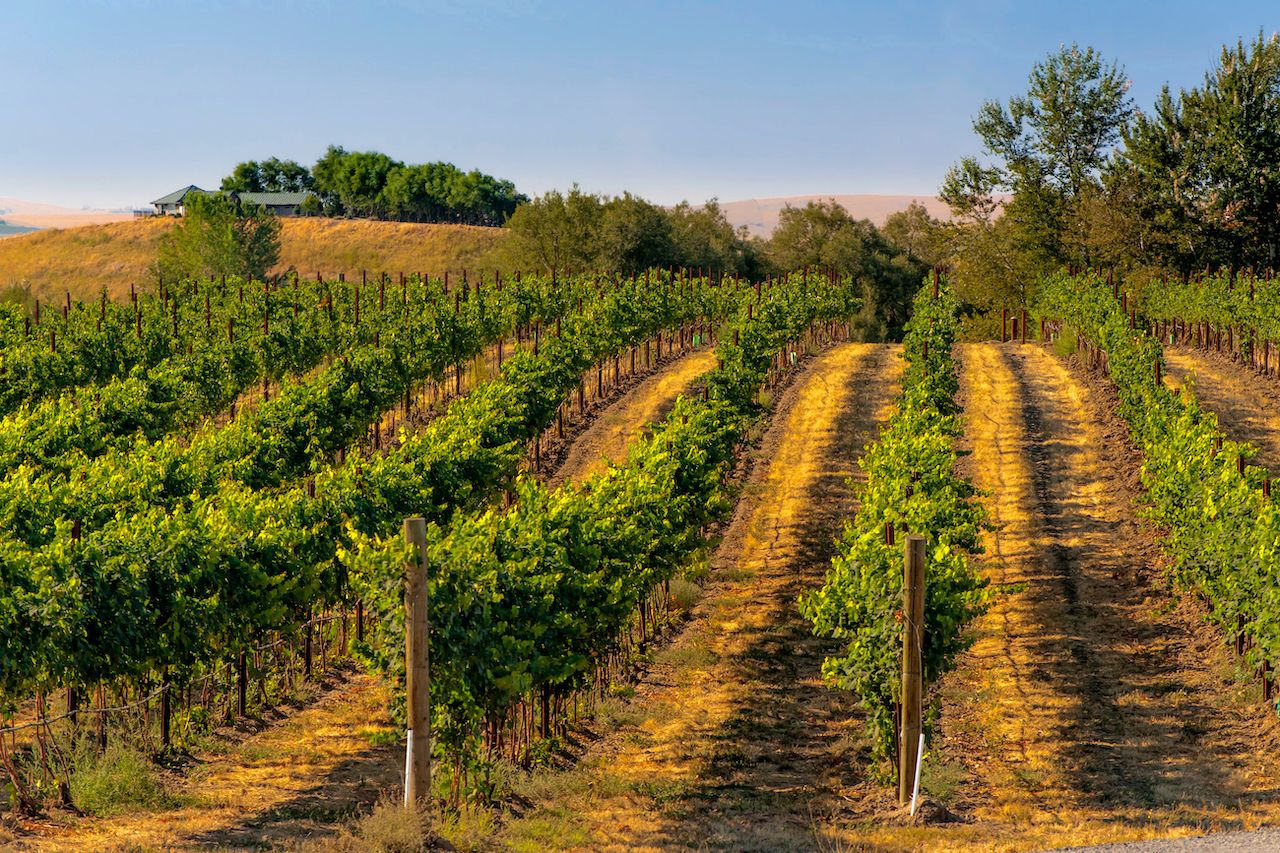
Photo: Danita Delmont/Shutterstock
Few towns are as wine-friendly as Walla Walla, and at around four and a half hours away from both Seattle and Portland, a road trip is the best way to see it. There are some 40 tasting rooms downtown representing a wide range of local wineries — some of which are known the world over for quality syrah and cabernet sauvignon. The Walla Walla Valley has 120 total wineries and 2,800 acres of vineyards, and there’s a wide style ranging from rustic to industrial. For something different, head toward the airport to drink in converted World War II-era buildings and taste upcoming producers in the wine incubator program.
Wineries to try: Woodward Canyon, Foundry Vineyards, Seven Hills Winery